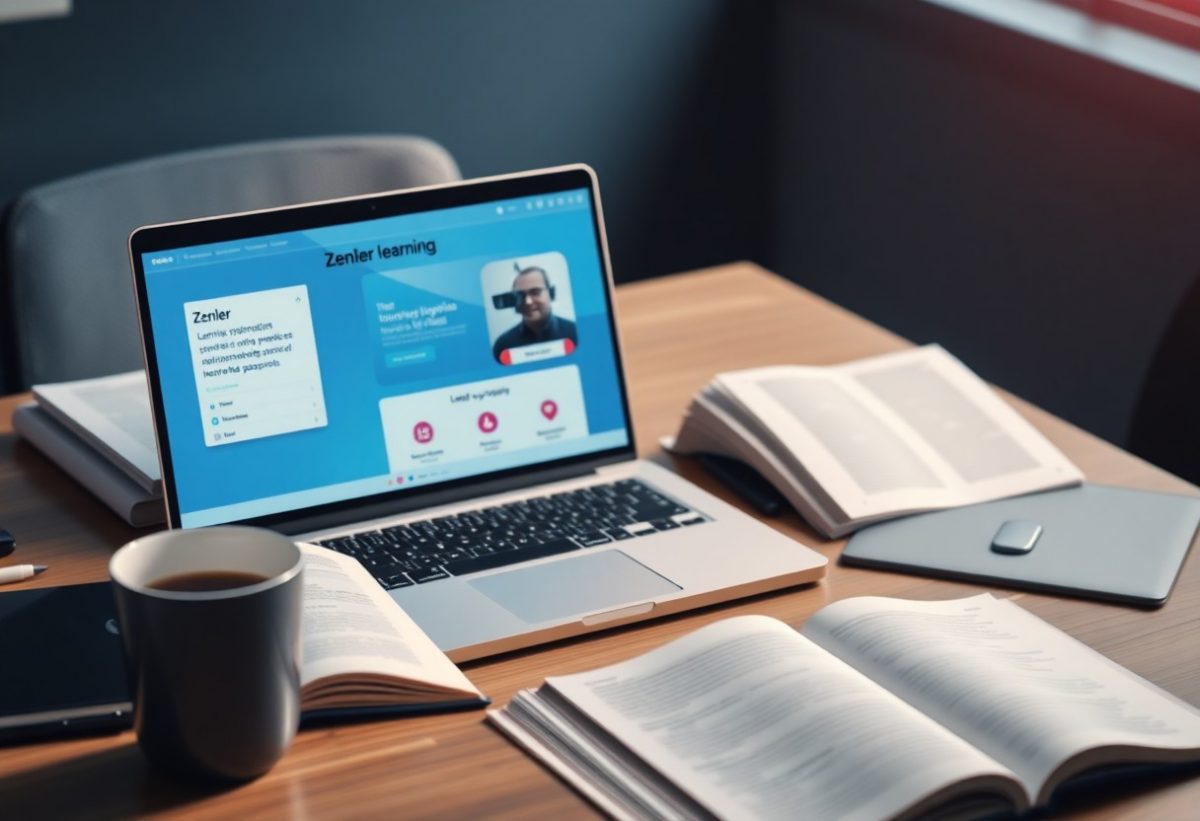Microlearning offers a dynamic approach to education by delivering content in small, easily digestible segments that enhance retention and engagement. By focusing on concise, targeted lessons, you can effectively meet the needs of your audience while maximizing the impact of your training programs. In this post, you will discover proven strategies for designing microlearning content that captivates learners and fosters a continuous learning environment. Get ready to transform your educational approach with bite-sized lessons that resonate with your audience.

Understanding Microlearning Fundamentals
The concept of microlearning revolves around delivering knowledge in small, digestible segments that are easy to consume. This approach promotes effective learning by catering to your attention spans and the fast-paced nature of modern life. By focusing on specific topics or skills, microlearning helps you grasp and retain information more efficiently, ultimately leading to better comprehension and application of the material.
Defining Microlearning and Its Core Principles
One of the foundational tenets of microlearning is its focus on short, focused learning experiences. By breaking down information into concise lessons, you can access tailored content that addresses immediate learning needs. This method emphasizes timely delivery, engagement, and the ability to revisit topics as needed, making learning more flexible and personalized.
Benefits of Bite-Sized Learning Approaches
Microlearning offers a range of advantages that can significantly enhance your learning experience. It provides you with quick access to information, allowing you to learn at your own pace and convenience. Additionally, the engaging format of bite-sized content fosters better retention and comprehension, as you can easily connect new concepts to existing knowledge.
For instance, learners often find it easier to absorb information when lessons are brief and focused. This method encourages you to engage with the material without feeling overwhelmed. Furthermore, bite-sized learning can be seamlessly integrated into your daily routine, fitting around your schedule. As a result, you can tackle specific learning objectives as they arise, helping you apply what you’ve learned more effectively in real-world situations.

Planning Your Microlearning Strategy
If you want to develop an effective microlearning strategy, it’s important to establish a clear roadmap that aligns with your overall learning objectives. This involves understanding the specific skills or knowledge gaps you aim to address and determining how bite-sized lessons can serve those needs. By strategically planning your content, you can ensure that each microlearning module delivers maximum impact and fosters engagement among learners.
Setting Clear Learning Objectives
Against the backdrop of a well-defined microlearning strategy, setting clear learning objectives helps you articulate what you want your learners to achieve. These objectives guide the content you create, ensuring each lesson has a purpose and leads to meaningful outcomes. When objectives are specific, measurable, achievable, relevant, and time-bound (SMART), you enhance the effectiveness of your microlearning content.
Identifying Target Audience Needs
Planning your content requires a deep understanding of your target audience’s needs and preferences. You must consider their current knowledge levels, learning styles, and the specific challenges they face in their roles. This insight enables you to create tailored microlearning experiences that resonate with your audience, making the learning process engaging and relevant.
To effectively identify your target audience’s needs, gather data through surveys, interviews, or focus groups. Analyze the feedback to look for consistent themes and barriers that learners encounter. This process helps you pinpoint not only the knowledge gaps to address but also the preferred delivery formats, whether video, interactive quizzes, or infographics. By putting your audience at the center of your microlearning strategy, you ensure that your content is both meaningful and impactful.
Content Development Guidelines
Now, developing engaging microlearning content requires following certain guidelines that enhance both learning and retention. Start by identifying your learners’ needs and ensuring the content aligns with their goals. Use clear and concise language, and design interactive elements where possible, making the lessons not only informative but also enjoyable. By adhering to these guidelines, you can create impactful and memorable microlearning experiences.
Structuring Bite-Sized Modules
Across the spectrum of microlearning, structuring your bite-sized modules effectively can significantly increase comprehension. Divide your content into small sections that each focus on a single idea or learning objective, allowing your learners to grasp concepts without feeling overwhelmed. Use visual aids and real-life examples to support the information, making it more relatable and easier to digest.
Optimal Length and Complexity Considerations
Guidelines for optimal length indicate that microlearning modules should typically last between 5 to 10 minutes, fostering engagement without causing fatigue. Additionally, consider the complexity of your subject matter. Strive for simplicity and ensure that each lesson builds upon the previous one, avoiding intricate concepts that could confuse your learners.
But striking the right balance between length and complexity can be challenging. Too long, and you risk losing your learners’ interest; too short, and you may fail to convey necessary information. Tailor each module’s length to the topic’s depth, and always test your content with a sample audience. This helps ensure that you are providing just the right amount of information to keep learners engaged while allowing them to grasp and apply new knowledge effectively.
Design Elements for Engagement
Not every design element will resonate with your audience; hence, it’s vital to choose wisely. Engaging microlearning content relies on thoughtful design that captures interest and facilitates retention. Emphasizing ease of navigation, aesthetic appeal, and a balance between text and visuals can significantly enhance your learners’ experience. By employing these strategies, you can create compelling lessons that not only inform but also motivate your audience to dive deeper into the content.
Visual Components and Multimedia Integration
Around your microlearning content, integrating visual components and multimedia platforms can greatly enhance viewer engagement. The use of images, infographics, and videos helps to break up text, making it visually appealing and more digestible. Incorporating different media types can cater to various learning preferences, thus enriching the overall educational experience.
Interactive Features and Assessment Tools
Integration of interactive features and assessment tools stimulates active participation, driving your audience to engage more deeply with the learning material. These components not only reinforce knowledge retention but also provide immediate feedback, enabling learners to assess their understanding in real-time.
Tools like quizzes, polls, and clickable elements allow you to capture learner interest while validating their grasp of the material. By implementing these assessments, you create a dynamic feedback loop where learners can recognize their strengths and identify areas for improvement. This approach empowers your audience to take ownership of their learning journey, resulting in a more fulfilling educational experience that promotes lasting retention.
Platform Selection and Delivery
Many factors come into play when selecting a platform for your microlearning content. You need to evaluate your audience’s preferences, the types of lessons you plan to create, and the technological capabilities of your organization. Choose a platform that facilitates easy creation and distribution while allowing for engagement and feedback. Consider your budget and the learning objectives to ensure a seamless delivery of bite-sized lessons.
Choosing Appropriate Technology Solutions
Above all, selecting the right technology solution for your microlearning content is vital for achieving your objectives. Look for platforms that support various formats, such as videos, quizzes, and interactive content. Integration capabilities with existing Learning Management Systems (LMS) are also vital for tracking progress. The goal is to ensure an enjoyable user experience that encourages participation and retention.
Mobile-First Design Considerations
Below, designing your microlearning content with a mobile-first approach is increasingly important. With learners constantly on the go, ensuring your materials are optimized for smaller screens allows for greater accessibility. Focus on creating a responsive design that maintains readability and usability regardless of device. Prioritize key messages and avoid clutter to help learners quickly grasp core concepts.
Another key aspect of mobile-first design is the importance of touch interactions. Make sure buttons are large enough for easy tapping and incorporate swipe features for navigation. Design each lesson to require minimal loading time, as slow content can lead to frustration and disengagement. You should also utilize mobile notifications to remind learners to engage with new content, reinforcing their commitment to learning and ensuring maximum reach.
Measuring Success
For any microlearning initiative, evaluating its effectiveness is imperative to understand its impact on learner engagement and knowledge retention. Assessing the success of your content helps you identify areas for improvement, ensuring that your lessons effectively meet the learning objectives and contribute to overall goals. Establishing a robust measurement framework allows you to adapt and refine your approach, ultimately maximizing the value of your microlearning efforts.
Performance Metrics and Analytics
Around the landscape of microlearning, performance metrics and analytics serve as vital tools for gauging the success of your content. By tracking engagement rates, completion times, and learner feedback, you can uncover insights that inform ongoing improvements. Utilizing data analytics enables you to make data-driven decisions, optimizing your microlearning strategies for greater effectiveness and alignment with your audience’s needs.
Learning Outcome Assessment
Beside tracking engagement, assessing learning outcomes is key to understanding whether your microlearning has achieved its educational goals. This involves evaluating the knowledge and skills acquired by learners post-training, which can be accomplished through quizzes, practical applications, or surveys. By measuring how well employees have absorbed the material, you can confirm that your lessons are not just being consumed, but are also translating into real-world results.
Indeed, understanding learning outcomes allows you to critically evaluate the effectiveness of your microlearning content. Establishing clear learning objectives at the outset provides a framework for assessment. You can use tools like pre- and post-assessments to gauge progress and identify knowledge gaps. Coupling this with qualitative feedback from learners further enhances your insight. This comprehensive approach not only shows how well the content is working but also guides your future content development, ensuring continuous improvement in your learning programs.
Final Words
Now that you understand the process of creating microlearning content, you can harness the power of bite-sized lessons to engage your audience more effectively. By breaking down complex information into manageable chunks, you enhance retention and drive performance. Focus on clear objectives, interactive elements, and real-life applications to maximize your impact. As you implement these strategies, you’ll find that your learners are more empowered, motivated, and equipped to apply what they’ve learned in their daily tasks.

